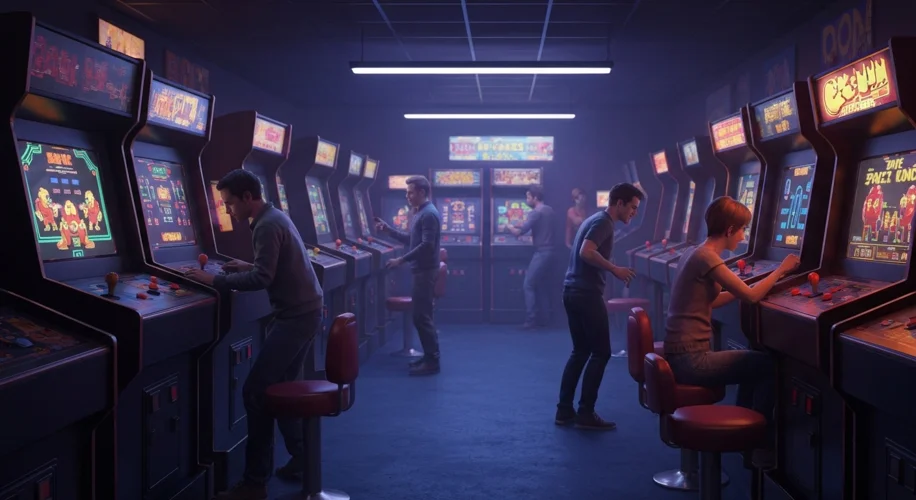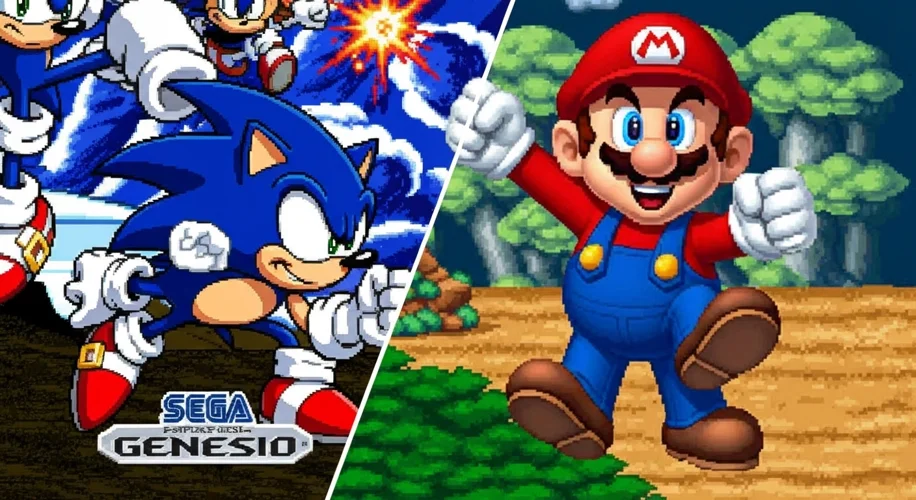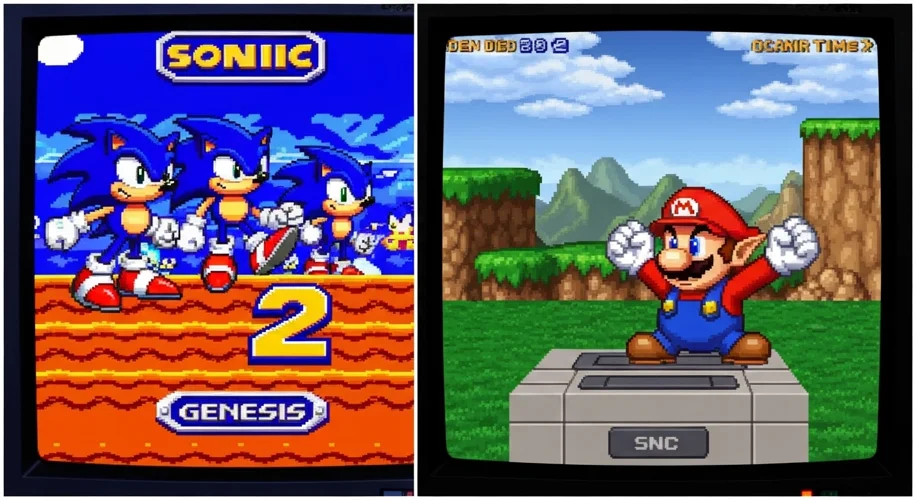The glow of cathode ray tubes, the cacophony of synthesized bleeps and bloops, the satisfying clack of joysticks – for a generation, these were the sensory hallmarks of a revolution. Today, as we navigate vast online worlds like the battlefields of “Battlefield” and the sprawling marketplaces of “Steam,” it’s easy to forget the humble, pixelated origins of our digital obsessions. The journey from coin-operated behemoths in dimly lit arcades to the sleek consoles gracing our homes is a tale of innovation, competition, and the birth of a cultural phenomenon.
Our story begins not with Wi-Fi signals and gigabytes, but with the clatter of quarters and the thrill of a high score. The 1970s witnessed the emergence of video games from laboratory curiosities into public entertainment. Atari’s “Pong” (1972) was an early sensation, its simple yet addictive gameplay a harbinger of what was to come. But it was the late 70s and early 80s that truly ignited the arcade fire. Games like “Space Invaders” (1978), “Asteroids” (1979), and the game-changing “Pac-Man” (1980) became cultural touchstones. Imagine the scene: a darkened room pulsating with light and sound, teenagers and adults alike hunched over glowing cabinets, their thumbs flying across joysticks, their minds lost in digital combat or maze-chasing.

This “Golden Age of Arcades” wasn’t just about individual games; it was a social experience. Arcades were gathering places, proving grounds for skill and bragging rights. The competitive spirit fostered by these public play spaces laid the groundwork for the esports of today. The creators, often visionary engineers and artists, poured their creativity into these machines. Toru Iwatani, the designer of “Pac-Man,” envisioned a game that could appeal to a broader audience, including women, moving away from the prevalent space shooters. His creation, with its iconic yellow protagonist and cheerful soundtrack, became a global phenomenon, transcending cultural and linguistic barriers.
Meanwhile, the dream of bringing this electrifying experience into the home was also taking shape. While early home consoles like Magnavox Odyssey (1972) and Atari’s own Video Computer System (VCS), later known as the Atari 2600 (1977), offered glimpses of this future, the market was volatile. The video game crash of 1983, caused by market saturation and a flood of low-quality games, nearly extinguished the home console industry. It seemed the magic of the arcade might remain confined to those public spaces.
Then came Nintendo. The Japanese company, already a veteran in the arcade and toy markets, learned from the mistakes of the past. In 1985, they launched the Nintendo Entertainment System (NES) in North America, rebranded from their Japanese Famicom. With a rigorous quality control system, famously demanding that developers adhere to strict guidelines and even labeling their games with the “Nintendo Seal of Quality,” they rebuilt consumer trust. The NES wasn’t just a console; it was a gateway to meticulously crafted worlds. “Super Mario Bros.” (1985), bundled with the system, was a revelation. Its vibrant graphics, tight controls, and innovative level design, spearheaded by Shigeru Miyamoto, redefined what a home video game could be.

The NES era ushered in a new wave of iconic franchises. “The Legend of Zelda” (1986) introduced expansive worlds and a sense of adventure, while “Metroid” (1986) offered a darker, more atmospheric experience. These games weren’t just mindless entertainment; they were interactive narratives that captured the imagination. Players spent hours exploring, strategizing, and conquering digital realms, forging deep connections with the characters and stories.
This period also saw the rise of Sega as a formidable competitor, with its Master System and later the Genesis (Mega Drive in Europe and Japan). The console wars had begun, a fierce rivalry that drove innovation and pushed the boundaries of what was technically possible. The introduction of 16-bit graphics with the Genesis in 1989 brought a new level of detail and speed to home gaming, exemplified by the cool, blue hedgehog Sonic in “Sonic the Hedgehog” (1991).

The legacy of this era is profound. The franchises born in the arcades and on early home consoles continue to thrive today, evolving with technology but retaining the core magic that captivated audiences decades ago. The competitive spirit, the storytelling, and the sheer joy of play cultivated during this time laid the very foundations for the global video game industry we know today. From the simple paddles of “Pong” to the complex simulations of modern gaming, the journey has been extraordinary, a testament to human ingenuity and our enduring desire for interactive escapism. It’s a reminder that even the most advanced digital worlds have roots in the flickering lights and enthusiastic cheers of a 1980s arcade.

